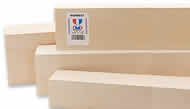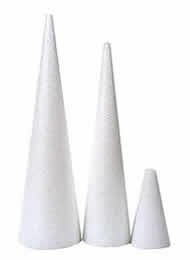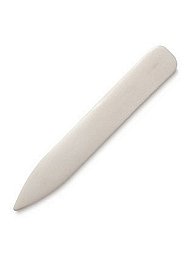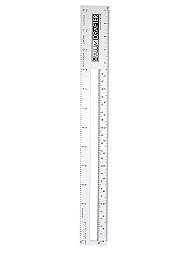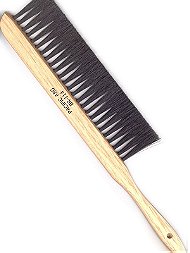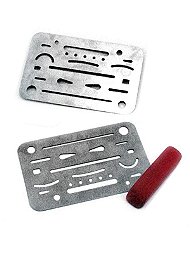Purchase Guide: Architecture & Drafting
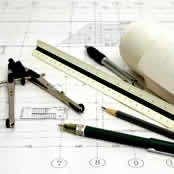 Engineering, Architecture and Design
Engineering, Architecture and Design
The Sydney Opera House. The Great Pyramid of Giza. The Enzo Ferrari. Some of the most beautiful and revered art
in the world is the work not of master painters, sculptors, or crafters, but of artists dedicated to expressing
themselves through engineering, architecture, and design! Skilled engineers, architects, and designers know as
well as any artist or appreciator that line, color, and form are delights that improve and enrich life for us
all. The work of these skilled artists, however, contrasts with that of famed masters such as Michelangelo,
Pablo Picasso, and Jack Kirby in one key respect: The art of engineers, architects, and designers is intended to
be just as functional as it is beautiful.
This important twist on the notion of art makes engineering, architecture, and design unique media with their
own rules and conventions. Indeed, there is an entire globe's worth of incredible creations that aren't likely
to be found hanging in any museum. It's a world of creation covered in any number of books and media on countless topics. But engineering,
architecture, and design also constitute a world that can be explored through MisterArt.com!
Due to their twin goals of form and function, engineering, architecture, and design require tools, materials,
and resources not found in other disciplines. This guide is intended to help you become more familiar with these
forms of art and the instruments that inspire them. The more you know, the better-informed decisions you'll be
able to make when purchasing with MisterArt.com.
This guide will cover the following categories of engineering, architecture, and design materials and supplies
that MisterArt.com offers at everyday discount prices:
What are color wheels and guides?
Color wheels are reference tools used by artists to
illustrate the relationships between colors. The traditional color wheel for light features the colors magenta,
yellow, and cyan arranged across from one another in points that form an equilateral triangle when connected by
straight lines. Another triangle is created by the alignment of the colors red, green, and blue. Connecting all
6 of these points forms a hexagon, and each color is arranged in a circle.

Colors are divided into four categories: primary colors, secondary colors, tertiary colors, and complementary
colors. Using many color wheels, an artist can line up a primary color on the dial with any color on the outside
wheel. The mixed colors appear in a window. These guides provide a handy reference for designers on how primary,
secondary, and tertiary colors relate and look when placed next to one another or mixed. Color wheels and guides
are especially useful for designers interested in seeing how bold or exotic colors will interact with one
another within a space or object.
You can save everyday on color wheels and guides as
well as other engineering, architecture, and design supplies at MisterArt.com!
What is drafting?
Drafting, or technical art, is an artistic style of creating
mathematically accurate plans or representations of architecture, engineering, and design projects. It's crucial
that drafting illustrations be precise and reproducible; for this reason, there are many specialized tools used
by drafters in the pursuit of geometric perfection.
Along with a flat surface to draw on, the t-square is
perhaps the most basic and essential tool used in drafting. By tracing the t-square's edge, drafters can draw
perfectly straight vertical and horizontal lines. By lining a triangle tool along the t-square's edge, the artist can
also draw perfect angles. Scales and rulers help
drafters ensure that the lines and angles contained in the spaces and objects that they're drawing stay in
perfect proportion to one another.
- Protractors and compasses are drafting
tools used to measure and draw precise angles and curves.
- Curves are also tracing tools used to craft rounded
lines.
- Drafting projects are traced and drawn on to a variety of different kinds of paper and films.
- Templates and lettering guides assist in reproducing common
shapes, curves, and characters quickly and easily.
- Magnifiers make seeing and drawing small, precise
details easier.
- Knives and blades are ideal for cutting
supplies into appropriate sizes for drawings, laminates, models, presentations, and nearly anything else that
requires trimming.
- Scales and rulers help drafters ensure that the
lines they draw are straight, the correct length, and within perfect proportion.
There are also many sets and kits available that
package together several common drafting tools. These kits are perfect for students and drafters who need to
replace several tools at once.
You can find all of these and more drafting tools
and accessories at MisterArt.com!
What modeling materials do engineers, architects, and designers use?
In order to give their clients the best possible presentations of their ideas, engineers, architects, and
designers often build models. Models can provide a three-dimensional example for builders to follow as well as
show potential financiers a smaller-scale version of what they could expect for their money. After drawing their
idea on paper, the next step for many artists involved in engineering, architecture, or design is to model it.
There are a number of different kinds of materials that are used to build these models, each with its own
advantages:
- Balsa and basswood are two
lightweight woods with a high strength-to-density ratio. They can be easily cut using a hobby knife and can be
stained to represent any kind of wood in a model. Typically, balsa and basswood are available in sheets,
blocks, and sticks.
- Foam and Styrofoam can be cut, pressed, and
shaped to represent all kinds of lightweight and durable 3D shapes useful in model building. Anything from
hills to trees can be made from foam, and painted as well. Foam comes in a variety of sizes, shapes, and
sheets.
- Plastic sheets are extremely durable
and useful for representing a wide variety of man-made building materials in models. Plastic sheets can easily
be cut, folded, and shaped and can be painted to look like anything.
- Landscaping materials are
especially useful for architects. By using them to recreate trees, fields, ponds, and other geographic
features, architects can give their clients and builders an idea of how their structures will interact with
the environment. Landscaping supplies are also great for model train enthusiasts!
MisterArt.com provides fast delivery to your door of all of these architecture, engineering, and design
modeling materials as well as tools for shaping,
carving, attaching, and cleaning them.
What are reprographics?

Engineers, architects, and designers create a lot of detailed drawings so that their ideas can be accurately
translated from the page to the real world. Reprography refers to the quick, repeated reproduction of these
often-large drawings and plans. Reprography is commonly used in catalogs and archives, as well as in the
architectural, engineering, and construction industries.
MisterArt.com has discounts on everything you need to burnish, mask, draw, and paste reprographics, including blue drawing leads and isometric and
grid drawing pads.








